Comments / Questions (12)
![]() Annika wrote:
Annika wrote:
KEHAOSA: = 183-195-215-231-253-273 silmust. Paigalda silmusemärkija 7-7-11-11-11-11 Õige on 7-9-9-15-15-19.
28.11.2025 - 19:25DROPS Design answered:
Tere Annika! Juhendit uuendatud, tänan teatamast!
04.12.2025 - 16:11
![]() Viola wrote:
Viola wrote:
Die Strickschrift von Seite sieben wird nicht gedruckt. Da sie nur die Spiegelung von Seite acht ist, komme ich zurecht, aber für Anfänger ist das bestimmt schwierig.
19.09.2025 - 15:43
![]() Tigresse wrote:
Tigresse wrote:
Bonjour. Le paragraphe AVANT LES MAILLES DU RAGLAN: Lâcher le jeté de l’aiguille gauche et le remettre torse (le prendre avec l’aiguille gauche par l’arrière). Tricoter le jeté à l’endroit, dans le brin avant pour éviter un trou, faut-il faire une boucle pour la tricoter? La vidéo en réponse à Mimi, faut-il faire les augmentations de A2 et A5 comme la vidéo ? Merci d'avance pour vos réponses.
02.04.2025 - 10:38DROPS Design answered:
Bonjour Trigresse, les jetés des augmentations des raglans se tricotent comme dans cette vidéo: on fait 1 jeté, et en fonction de sa position avant les mailles du raglan on va le tricoter soit en le lâchant puis en le reprenant par l'arrière = avant les mailles du raglan soit torse à l'endroit = après les mailles du raglan. Les jetés/augmentations des diagrammes A.2 et A.5 se tricotent simplement torse à l'endroit. Bon tricot!
02.04.2025 - 14:05
![]() Nina wrote:
Nina wrote:
Jeg kan ikke forstå denne opskrift, eller det vil sige, når jeg kommer til "Nu skal der strikkes mønster", som jeg læser opskrifter (str xxl) så skal jeg starte med en omgang vr og derefter en omgang 1r 1vr (mønster A2)
13.02.2025 - 14:53DROPS Design answered:
Jo, vi beskriver første pind i mønsteret (du starter på nederste pind i diagrammerne): Strik 1 maske ret (= raglanmaske), tag 1 maske ud, strik A.1(1vr,1r) over de næste 13 masker, tag 1 maske ud, strik 2 masker ret (= raglanmasker), tag 1 maske ud, strik A.2 (1vr) – start ved pil for valgt størrelse, strik A.3 (8m) totalt 3 (= 24 masker), strik A.4 totalt 3 gange (=24), strik A.5 – start ved pil for valgt størrelse, tag 1 maske ud, strik 2 masker ret (= raglanmasker), tag 1 maske ud, strik A.1 over de næste 13 masker, tag 1 maske ud, strik 2 masker ret (= raglanmasker), tag 1 maske ud, strik A.1 over de næste 37 masker, tag 1 maske ud, strik 1 maske ret (= raglanmaske).
18.02.2025 - 09:55
![]() Malory Vialard wrote:
Malory Vialard wrote:
Bonjour, je n’ai pas accès à A2 ça correspond à quoi du coup ? Merci
24.01.2025 - 08:49DROPS Design answered:
Bonjour Mme Vialard, vous trouverez le diagramme A.2 en bas de page, sous le diagramme A.5 et juste au-dessus du schéma des mesures. Bon tricot!
24.01.2025 - 09:56
![]() Eilen wrote:
Eilen wrote:
Ville denne være mulig å strikke i drops Air? Jeg ser at det garnet har samme strikkefasthet som garnet i oppskriften, men vil det at det er mer fluffy gjøre at det ikke kan brukes til denne oppskriften? Spør da jeg ofte opplever at Nepal og Alaska kan klø
16.01.2025 - 22:17DROPS Design answered:
Hej Eilen, ja du kan absolut bruge DROPS Air til denne opskrift :)
17.01.2025 - 12:02
![]() Rachel wrote:
Rachel wrote:
Hi, I have another question. Should the yarn over Raglan increases be worked on the following round, as stockinette stitch or in pattern. The instructions say to work in stockinette stitch. If that's the case, there's isn't enough room on the front section to complete A.5. If it's worked in pattern, the charts fit. It's just not working for me. Please help.
28.12.2024 - 21:07DROPS Design answered:
Dear Rachel, the increased stitches should be worked in the pattern/charts; there seems to be a typo in the UK version, we will correct it as soon as possible. Happy knitting!
30.12.2024 - 01:38
![]() Rachel wrote:
Rachel wrote:
Hi. I'm finding this pattern extremely confusing. I've done my first raglan increase row on the yoke using the charts. How are the inbetween rows worked? Are the yarn over stitches just worked as per the raglan increase instructions and then follow on with the charts? Or are the charts knitted immediately after the raglan stitches? I hope this makes sense. Thank you.
27.12.2024 - 19:40DROPS Design answered:
Dear Rachel, you work according to the established patterns and the charts. The charts show all rounds in the pattern so, where you worked each chart you simply work the next round of the same chart above it. The increased stitches are worked as indicated in RAGLAN, depending on whether the increase is before or after the 2 knit stitches and, in the next rows, this stitch is worked in stocking stitch. These stitches should be worked in the pattern/charts. Happy knitting!
30.12.2024 - 00:52
![]() Mimi wrote:
Mimi wrote:
Bonjour, Je n'ai rien compris à vos explications des augmentations. Point 1 : OK Point 2 : je pique dans le brin avant ou le brin arrière? Point 3 : "écouler ce jeté dans la maille"???? Qu'est-ce que ça veut dire? Point 4 : ????? Ne peut-on pas faire tout simplement une augmentation intercalaire? Merci pour vos explications
12.11.2024 - 18:21DROPS Design answered:
Bonjour Mimi, dans cette vidéo nous montrons comment réaliser ce type d'augmentations, vous pouvez toujours augmenter différemment, l'effet en sera juste différent. Bon tricot!
13.11.2024 - 07:40
![]() Maria wrote:
Maria wrote:
I don't get your messy explanation... "Continuethis pattern and increase for raglan every 2nd round a total of 19-21-22-23-25-25 times " and right after that "The sleeve-increases are now finished. Continue increasing for raglan on the front and back pieces every 2nd round 5-5-5-5-5-8 more times". So why you just don't say that I need to increase 26 times for raglan in total (making an M size)? It's really difficult to understand.
31.10.2024 - 18:27DROPS Design answered:
Dear Maria, in size M you will increase for front and back piece a total of 26 times on every other round and at the same time increase for sleeves a total of 21 times, so that on the last 5 increases for raglan you increase only on body and not on sleeves anymore. Hope it can help. Happy knitting!
01.11.2024 - 08:13
Ivory Coast#ivorycoastsweater |
||||||||||||||||
 |
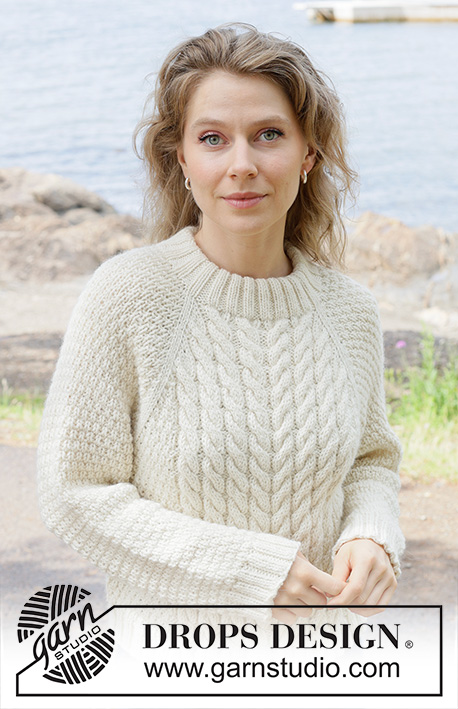 |
|||||||||||||||
Knitted jumper in DROPS Nepal or DROPS Alaska. The piece is worked top down with raglan, cables and relief-pattern. Sizes S - XXXL.
DROPS 252-17 |
||||||||||||||||
|
------------------------------------------------------- EXPLANATIONS FOR THE PATTERN: ------------------------------------------------------- INCREASE TIP: This symmetrical increase gives 1 new stitch. Follow steps 1-4 below: 1. Loosely slip the first stitch on the left needle onto the right needle as if to purl. Hold the knitting yarn behind the work. 2. Insert the left needle behind the slipped stitch and between the slipped stitch and the first stitch on the right needle. 3. Make a yarn over on the right needle and pull the yarn over through the stitch to make 1 new stitch on the right needle. 4. Drop the outermost part of the stitch off the left needle and then knit the second strand of the stitch through the front loop. You have now increased 1 stitch. PATTERN: See diagrams A.1 to A.5. Find your size in the diagram and begin at your arrow – applies to A.2 and A.5. RAGLAN: Increase 1 stitch by making 1 yarn over after/before the 2 knitted raglan-stitches. On the next round, work the yarn overs as follows: BEFORE RAGLAN-STITCHES: Slip the yarn over off the left needle and replace it twisted (insert the left needle through the back when replacing it). Knit the front loop to avoid a hole. Then work the new stitch in pattern. AFTER RAGLAN-STITCHES: Knit through the back loop to avoid a hole. Then work the new stitch in pattern. SLEEVE TIP: When knitting up stitches under the sleeve, you can get a small hole in the transition between stitches on the body and sleeve. This hole can be closed by picking up the strand between 2 stitches and working this strand twisted together with the first stitch between body and sleeve. DECREASE TIP: Decrease 1 stitch on each side of the marker-stitch as follows: Work until there are 2 stitches left before the marker, knit 2 together, knit 1 (marker-stitch), slip 1 stitch knit-wise, knit 1 and pass the slipped stitch over the knitted stitch (2 stitches decreased). ------------------------------------------------------- START THE PIECE HERE: ------------------------------------------------------- JUMPER – SHORT OVERVIEW OF THE PIECE: The pattern uses both long and short needles; start with the length which fits the number of stitches and change when necessary. The neck and yoke are worked in the round with circular needle, top down and from the right back shoulder. When the yoke is finished, it is divided for the body and sleeves and the body continued in the round, while the sleeves wait. The sleeves are worked top down, in the round. The neck is folded double and fastened to the inside. NECK: Cast on 96-96-104-104-112-112 stitches with circular needle size 5.5 mm and DROPS Nepal or DROPS Alaska. Change to needle size 3.5 mm (casting on with a larger needle size makes the cast-on edge elastic). Knit 1, work rib in the round (purl 2, knit 2) until there are 3 stitches left, purl 2 and knit 1. Work this rib for 11-11-11-11-13-13 cm. The neck is later folded double, leaving a neck-height of approx. 5-5-5-5-6-6 cm. The round begins on the right back shoulder. Insert 1 marker after the first 32-32-34-34-36-36 stitches (approx. mid-front), the piece is now measured from here. YOKE: Change to needle size 5.5 mm. Insert 4 marker-threads while working the first round, all marker-threads inserted between 2 knitted stitches which are the raglan-stitches and are always worked in stocking stitch. Knit the first round as follows: Insert marker-thread 1 at the beginning of the round, knit 16 stitches and decrease 1 stitch across these stitches (= 15 sleeve-stitches), insert marker-thread 2 before the next stitch, knit 32-32-36-36-40-40 stitches and increase 4-4-8-8-12-12 stitches evenly across these stitches – read INCREASE TIP (= 36-36-44-44-52-52 stitches on front piece), insert marker-thread 3 before the next stitch, knit 16 stitches and decrease 1 stitch across these stitches (= 15 sleeve-stitches), insert marker-thread 4 before the next stitch, knit 32-32-36-36-40-40 stitches and decrease 3-3-1-1-1-1 stitch across these stitches (= 29-29-35-35-39-39 stitches on back piece) = 95-95-109-109-121-121 stitches in total. There are more stitches on the front piece than on the back piece due to cabling on the front piece. You now work PATTERN but the raglan-stitches in stocking stitch and AT THE SAME TIME increase for RAGLAN on each side of the raglan-stitches – read description above. Work the first round as follows: Knit 1 (= raglan-stitch), increase 1 stitch, work A.1 across the next 13 stitches, increase 1 stitch, knit 2 (= raglan-stitches), increase 1 stitch, work A.2 – start at the arrow for your size, work A.3 1-1-2-2-3-3 times (= 8-8-16-16-24-24 stitches), work A.4 1-1-2-2-3-3 times (= 8-8-16-16-24-24 stitches), work A.5 – start at the arrow for your size, increase 1 stitch, knit 2 (= raglan-stitches), increase 1 stitch, work A.1 across the next 13 stitches, increase 1 stitch, knit 2 (= raglan-stitches), increase 1 stitch, work A.1 across the next 27-27-33-33-37-37 stitches, increase 1 stitch, knit 1 (= raglan-stitch). Continue this pattern and increase for raglan every 2nd round a total of 19-21-22-23-25-25 times = 255-271-295-303-333-333 stitches (= 8 stitches increased on each increase-round + increases in A.2 and A.5). Remember to maintain the knitting tension. The sleeve-increases are now finished. Continue increasing for raglan on the front and back pieces every 2nd round 5-5-5-5-5-8 more times = 275-291-315-323-353-365 stitches (= 4 stitches increased on each increase-round). Continue the pattern without further increases until the yoke measures 22-24-25-26-28-30 cm from the marker mid-front – adjusting so the last round is either round 2 or 5 in A.1, with the next round in A.1 knitted. Now divide for the body and sleeves. DIVIDE FOR BODY AND SLEEVES: Place the first 53-57-59-61-65-65 stitches on a thread for the sleeve, cast on 7-9-9-15-15-19 stitches (in side mid-under sleeve), work 92-96-108-110-124-130 stitches as before (= front piece), place the next 53-57-59-61-65-65 stitches on a thread for the sleeve, cast on 7-9-9-15-15-19 stitches (in side mid-under sleeve), work the last 77-81-89-91-99-105 stitches as before (= back piece). Cut the strand. The body and sleeves are finished separately. BODY: = 183-195-215-231-253-273 stitches. Insert 1 marker in the middle stitch of the 7-9-9-15-15-19 cast-on stitches under each sleeve. These marker-stitches are always knitted. Start the round with the marker-stitch under the right sleeve and continue the pattern from the yoke. The raglan-stitches are no longer knitted and the new stitches under each sleeve are worked into the pattern on the front and back pieces, on each side of the knitted marker-stitches. Work until the piece measures 47-49-51-53-54-56 cm from the marker mid-front – adjusting so the last round is either round 3 or 6 in A.1. Change to circular needle size 3.5 mm. Work rib (knit 2, purl 2) AT THE SAME TIME, increase 13-17-17-17-15-19 stitches evenly on the first round (do not increase across the cables) – remember INCREASE TIP = 196-212-232-248-268-292 stitches. When the rib measures 5-5-5-5-6-6 cm, cast off with rib. The jumper measures approx. 52-54-56-58-60-62 cm from the marker mid-front and 56-58-60-62-64-66 cm from the shoulder. SLEEVES: Place the 53-57-59-61-65-65 sleeve-stitches from one thread on circular needle size 5.5 mm and knit up 1 stitch in each of the 7-9-9-15-15-19 stitches cast on under the sleeve = 60-66-68-76-80-84 stitches. Insert a marker in the middle stitch of the 7-9-9-15-15-19 stitches under the sleeve and allow the marker to follow your work onwards. The round begins at the marker-thread. Read SLEEVE TIP and continue A.1 from the yoke. The marker-stitch under the sleeve is always knitted. When the sleeve measures 2 cm, decrease 2 stitches under the sleeve – read DECREASE TIP. Decrease like this every 5-4-3½-2½-2-2 cm a total of 7-9-9-12-13-14 times = 46-48-50-52-54-56 stitches. Continue working until the sleeve measures 38-37-36-36-33-32 cm from the division, adjusting so the last round is either round 3 or 6 in A.1. Change to double pointed needles size 3.5 mm. Work rib (knit 2, purl 2), AT THE SAME TIME increase 6-8-6-8-10-8 stitches evenly on the first round = 52-56-56-60-64-64 stitches. When the rib measures 5-5-5-5-6-6 cm, cast off a little loosely with rib. The sleeve measures approx. 43-42-41-41-39-38 cm. ASSEMBLY: Fold the neck double to the inside and sew down. To avoid the neck being tight and rolling outwards, it is important that the seam is elastic. |
||||||||||||||||
Diagram explanations |
||||||||||||||||
|
||||||||||||||||
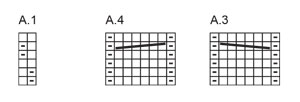 |
||||||||||||||||
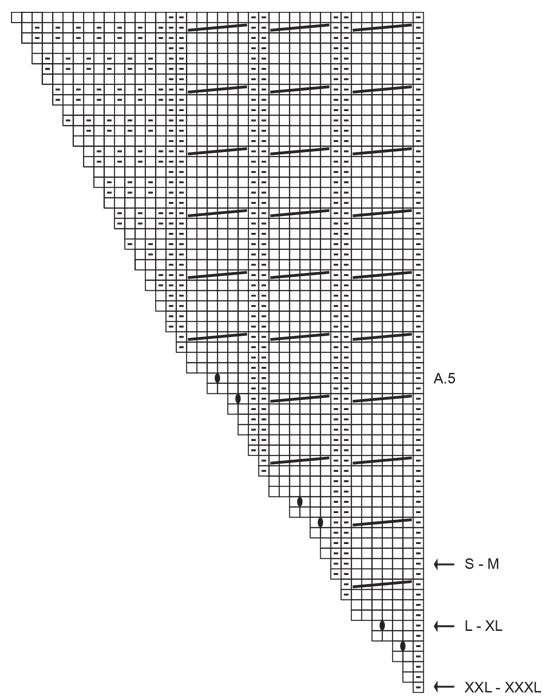 |
||||||||||||||||
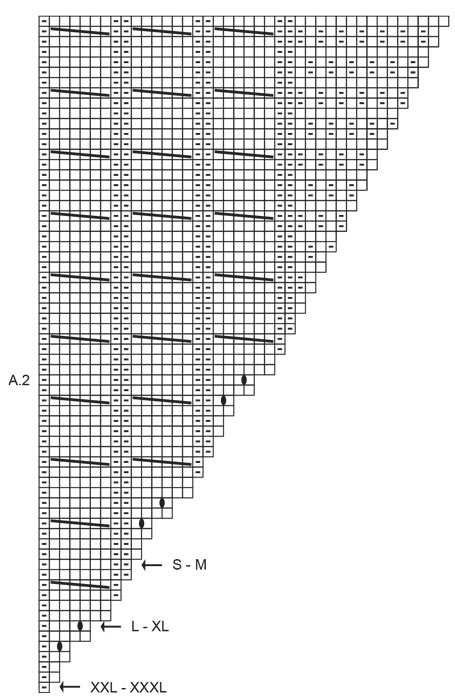 |
||||||||||||||||
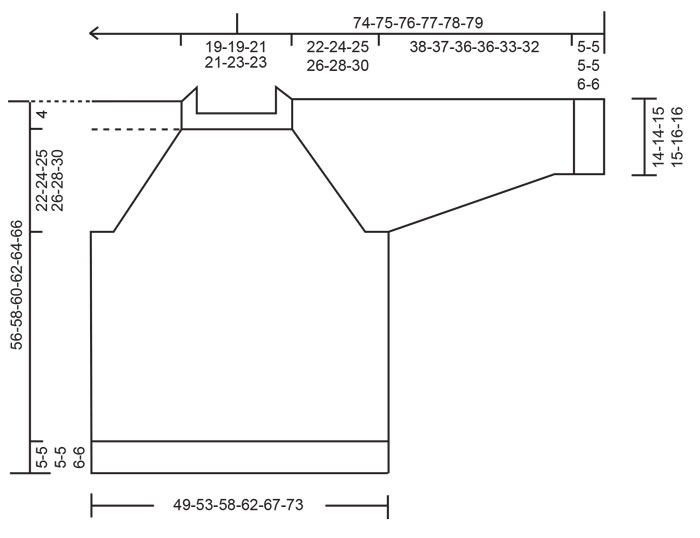 |
||||||||||||||||
Have you finished this pattern?Tag your pictures with #dropspattern #ivorycoastsweater or submit them to the #dropsfan gallery. Do you need help with this pattern?You'll find 30 tutorial videos, a Comments/Questions area and more by visiting the pattern on garnstudio.com. © 1982-2025 DROPS Design A/S. We reserve all rights. This document, including all its sub-sections, has copyrights. Read more about what you can do with our patterns at the bottom of each pattern on our site. |
||||||||||||||||







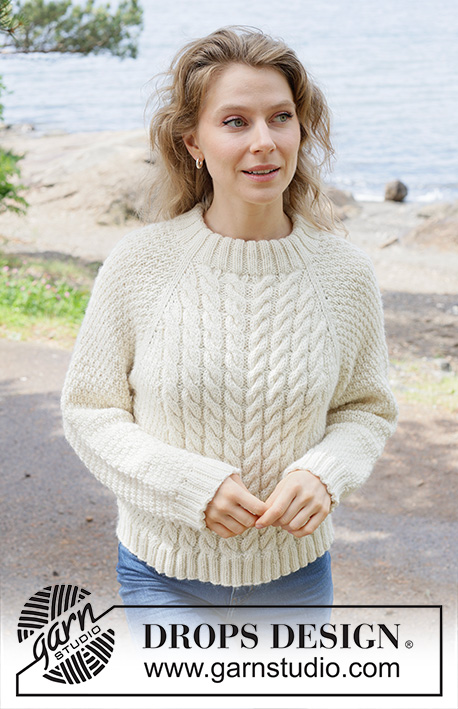
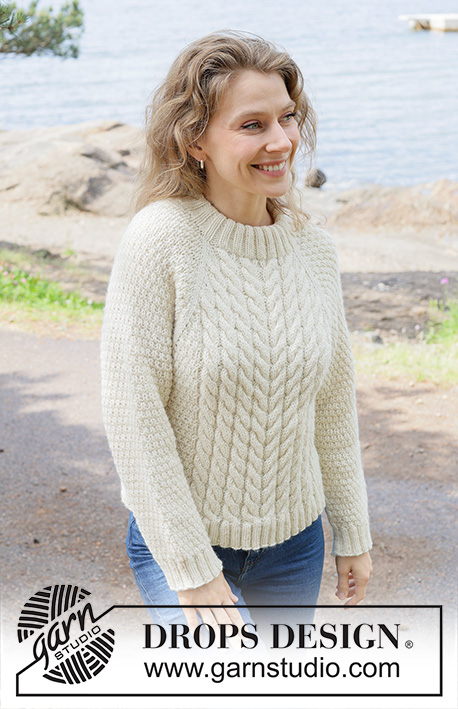
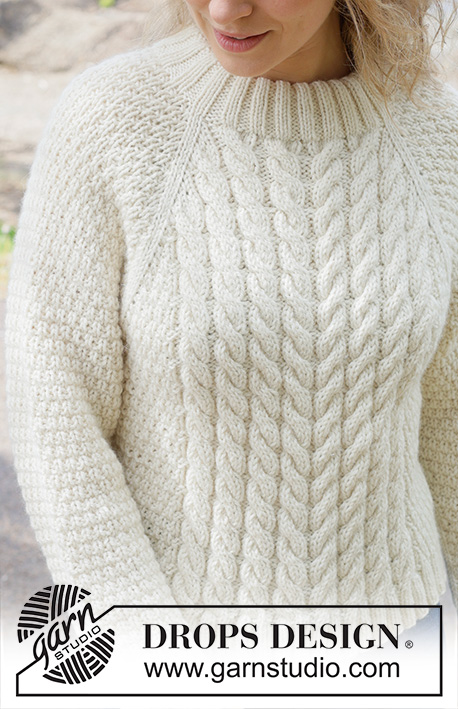

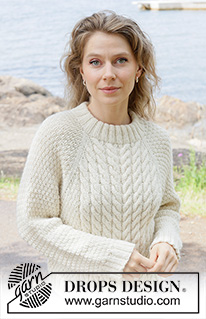
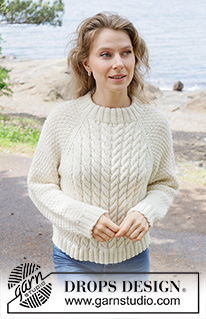
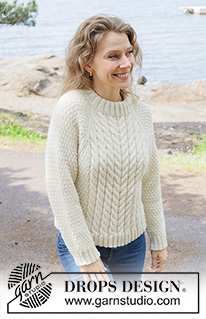
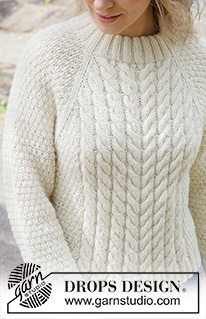

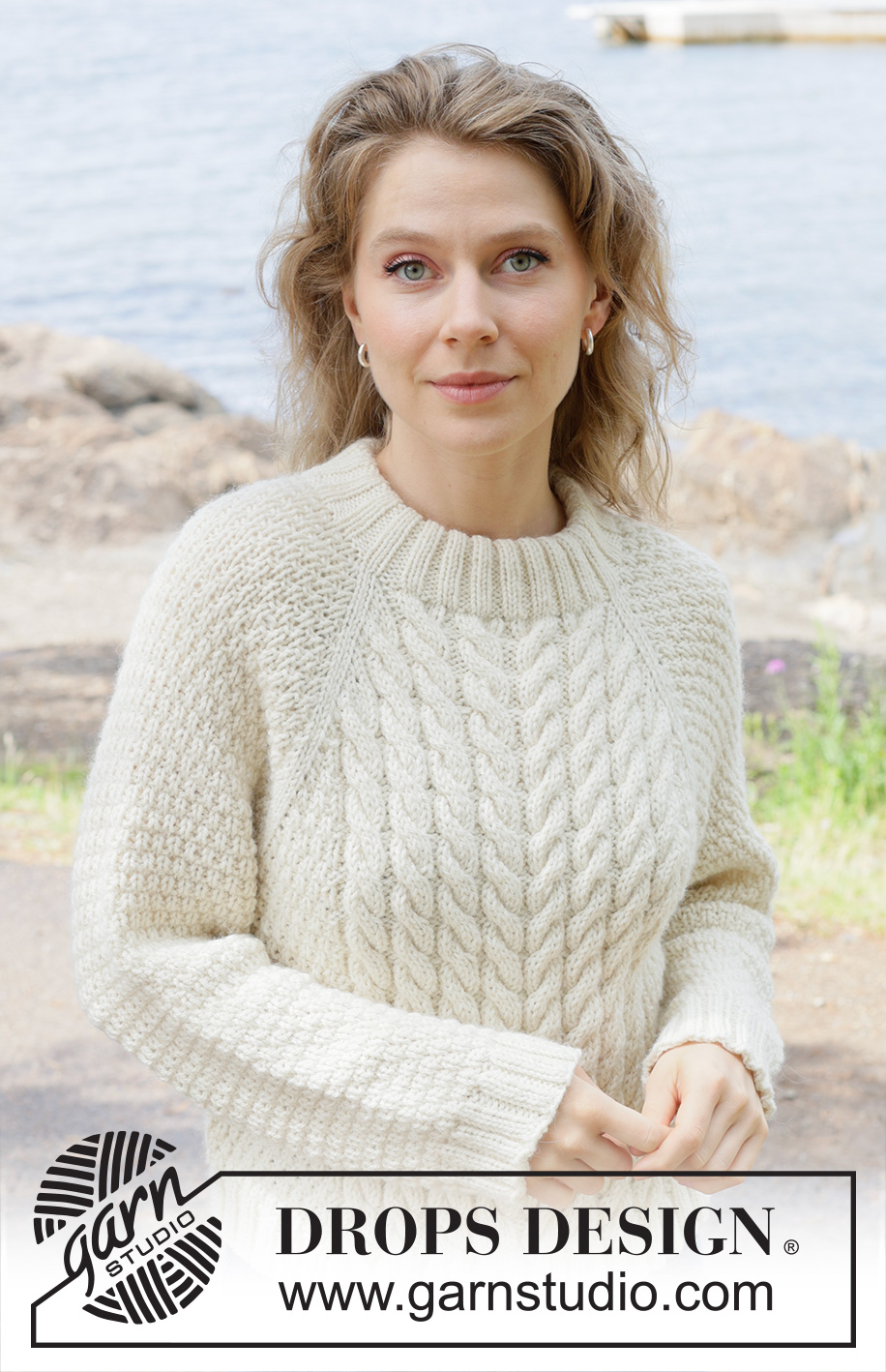

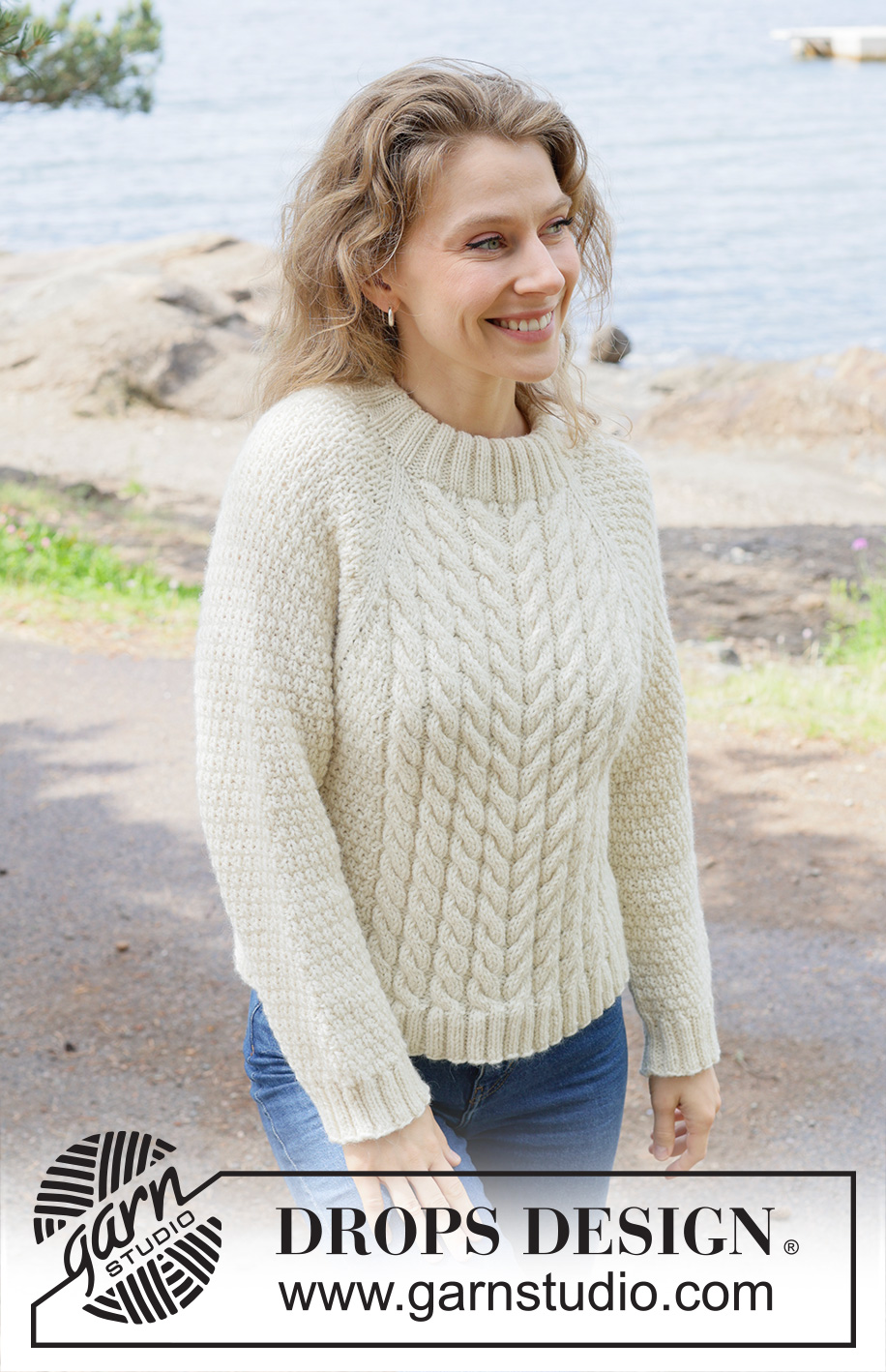
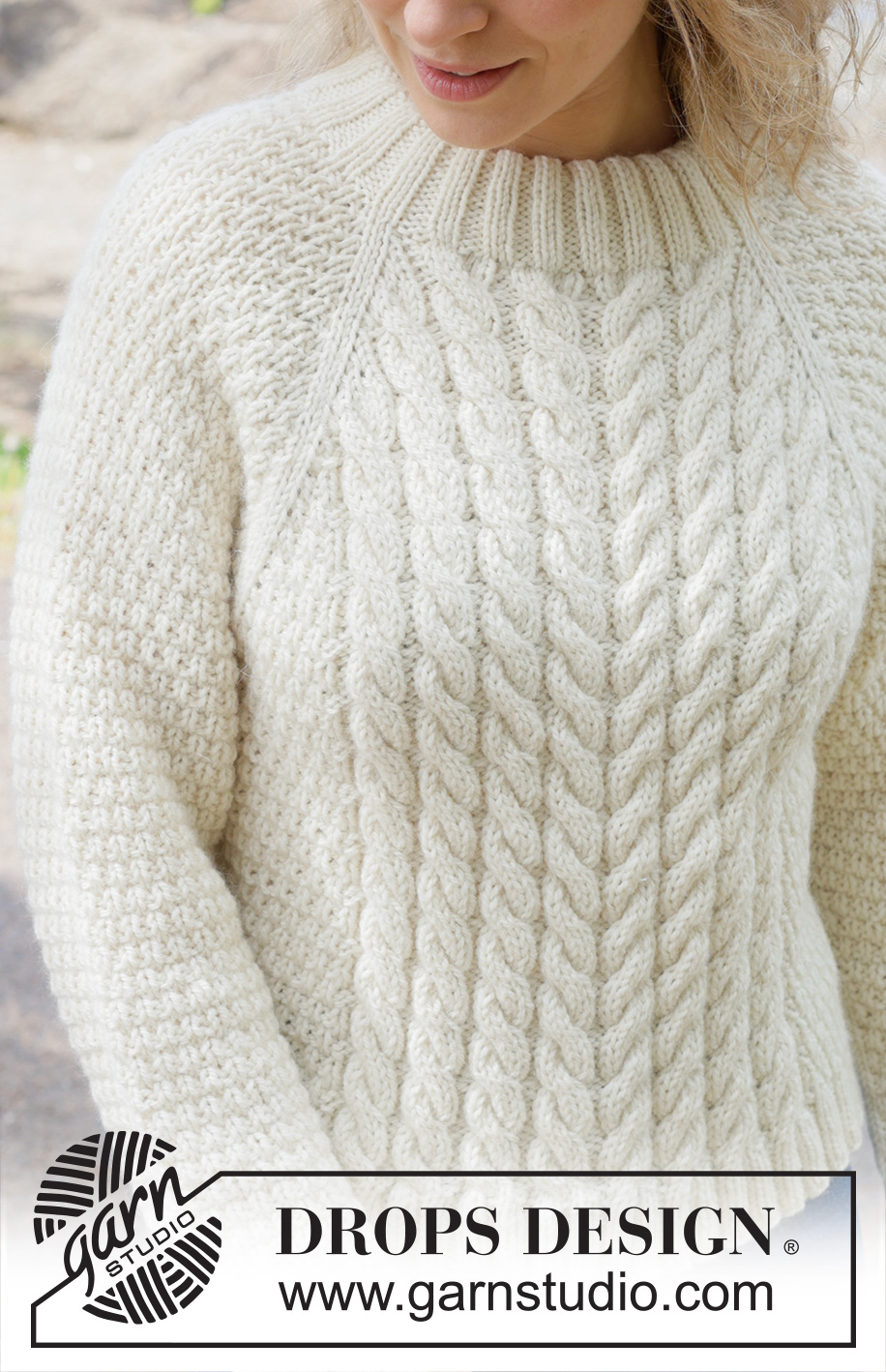

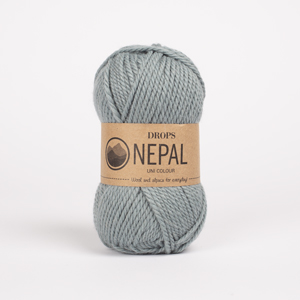
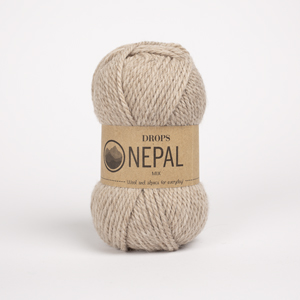




























































Post a comment to pattern DROPS 252-17
We would love to hear what you have to say about this pattern!
If you want to leave a question, please make sure you select the correct category in the form below, to speed up the answering process. Required fields are marked *.